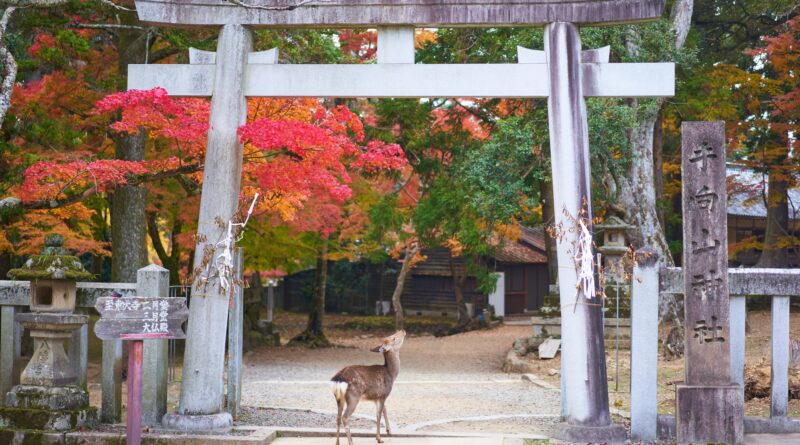Take ni Suzume/Yanagi ni Tsubame/Momiji ni Shika (竹に雀/柳に燕/紅葉に鹿 – Match Made in Heaven)
Take ni Suzume/Yanagi ni Tsubame/Momiji ni Shika
竹に雀/柳に燕/紅葉に鹿
In my post yesterday, I introduced the phrase “Ume ni Uguisu,” which describes something harmonious or well-combined.
昨日の投稿では、取り合わせのよいものの喩えとして「梅に鶯」という表現を紹介しました。
Expressions that carry similar meanings to this include take ni suzume (竹に雀), yanagi ni tsubame (柳に燕) and momiji ni shika (紅葉に鹿).
同様の意味を持つ表現は他にも「竹に雀」「柳に燕」「紅葉に鹿」などがあります。
Since take (竹) means “bamboo,” and suzume (雀) means “sparrow,” the literal meaning of take ni suzume is “a sparrow with a bamboo.”
「竹」は “bamboo”、「雀」は “spallow” を意味するので、「竹に雀」の文字どおりの意味は “a sparrow with a bamboo” となります。
Since yanagi (柳) means “willow,” and tsubame (燕) means “swallow,” the literal meaning of yanagi ni tsubame is “a swallow with a willow.”
「柳」は “willow”、「燕」は “swallow” を意味するので、「柳に燕」の文字どおりの意味は “a swallow with a willow” となります。
Since momiji (紅葉) means “autumn leaves,” and shika (鹿) means “deer,” the literal meaning of momiji ni shika is “a deer with autumn leaves.”
「紅葉」は “autumn leaves”、「鹿」は “deer” を意味するので、「紅葉に鹿」の文字どおりの意味は “a deer with autumn leaves” となります。
These combinations are all used as high-scoring patterns in the Hanafuda (Japanese card game).
これらの組み合わせは、いずれも花札における得点の高い図柄として使用されています。




